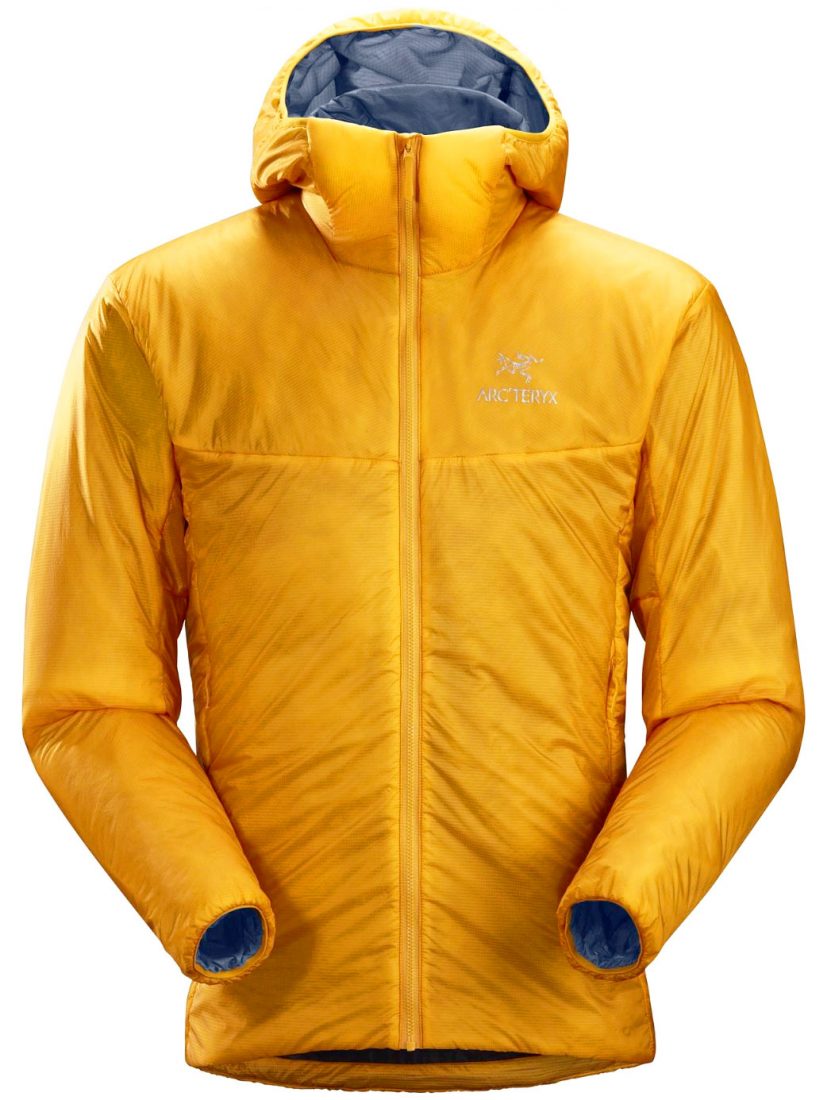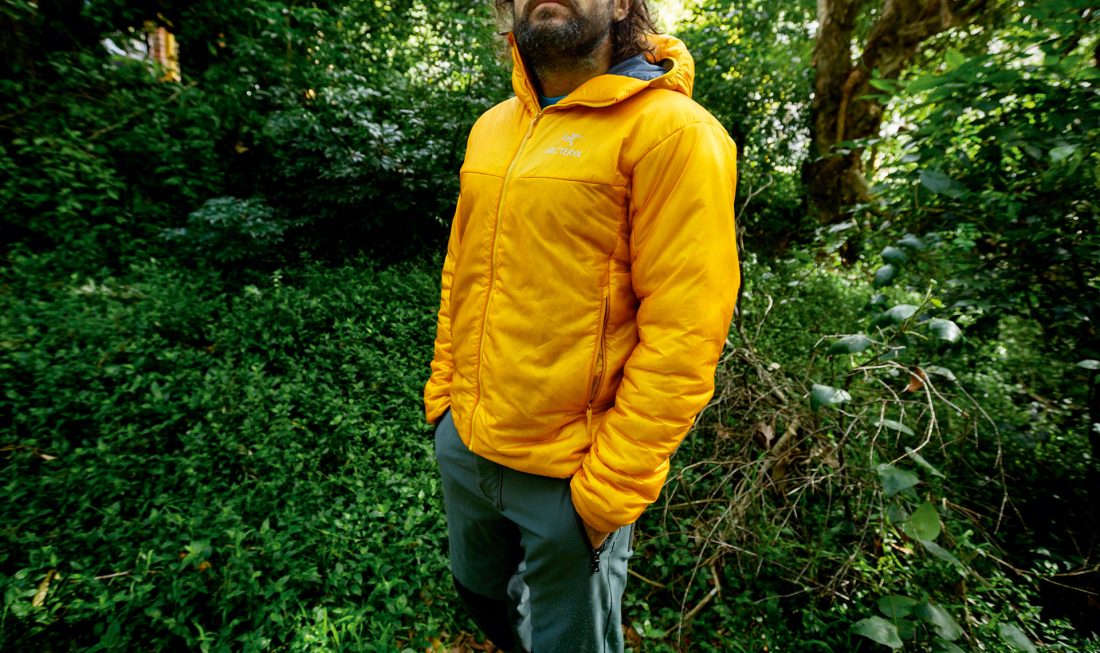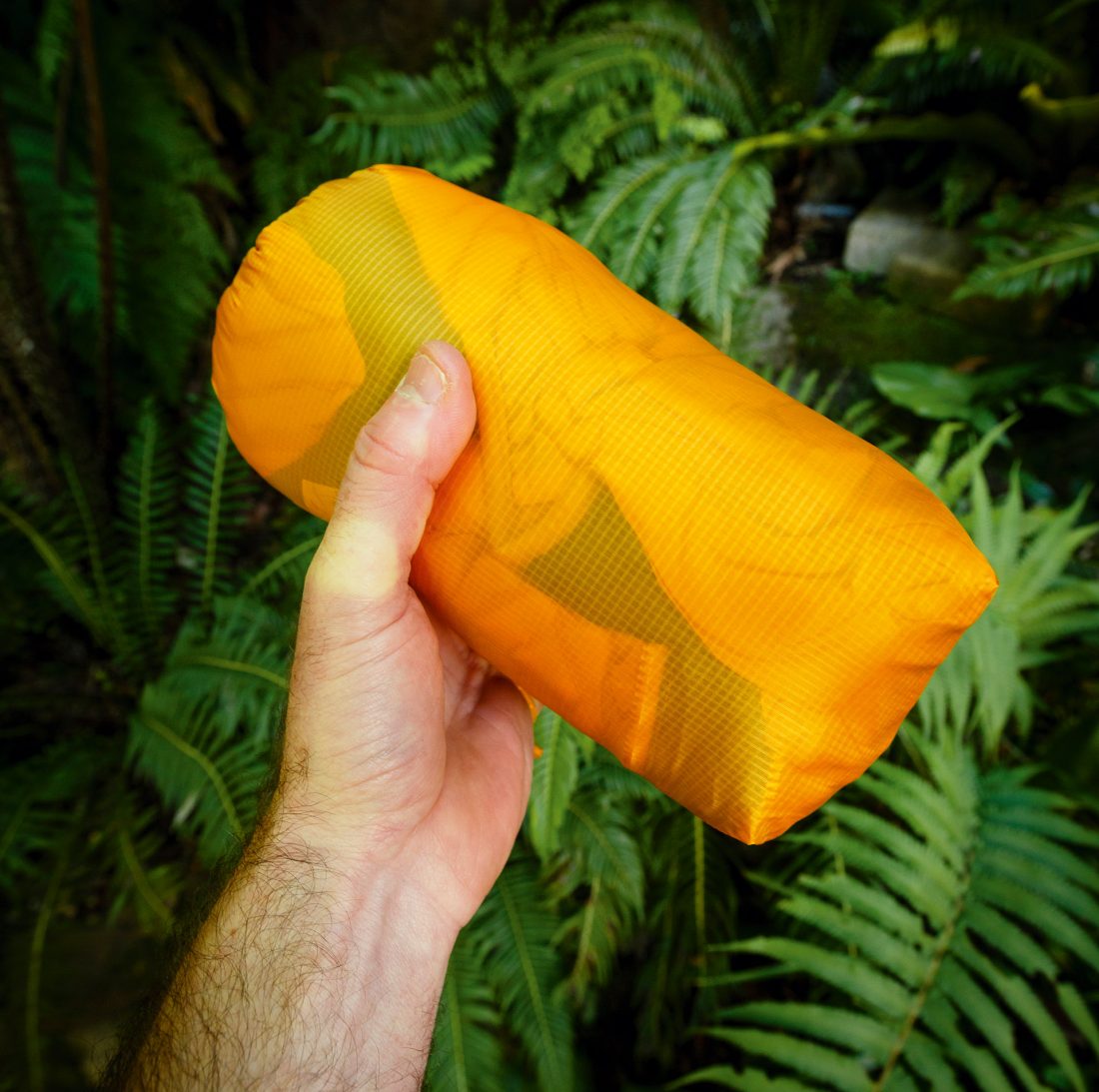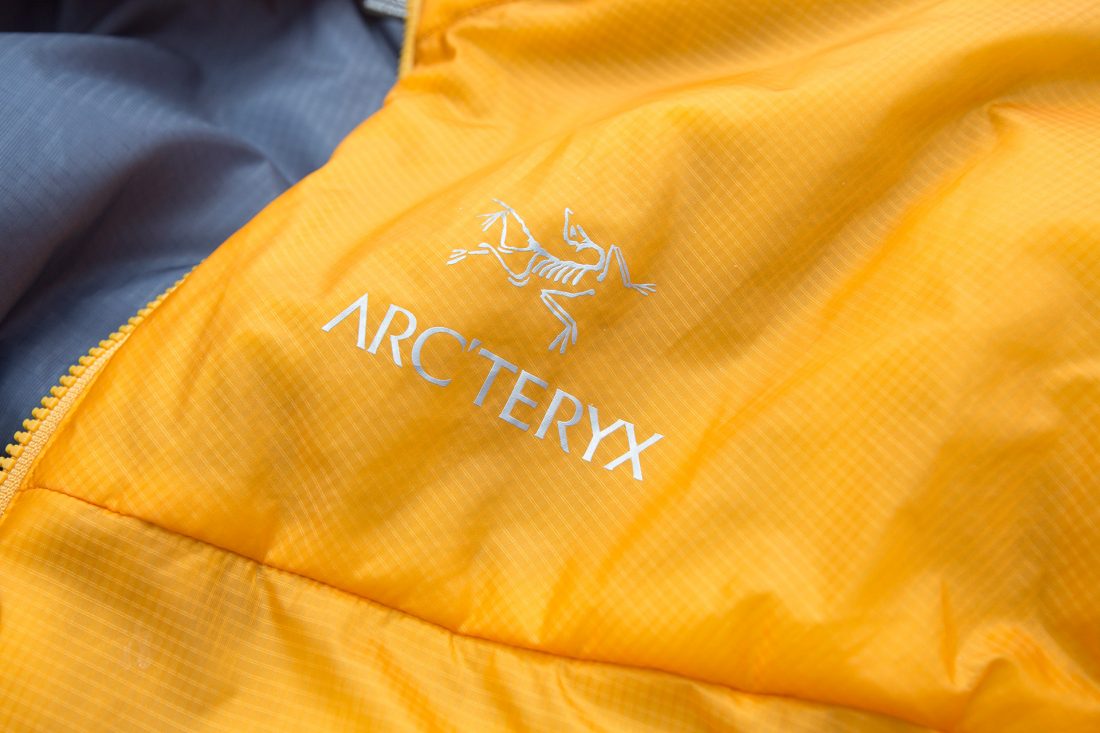
I love down jackets (well, who doesn’t, except the geese). I have three, but during the winter months my ultra-lightweight hoodie is—because I live in a 130-year old house that is usually colder inside than out—after my jeans perhaps the most used piece of clothing of I have. It offers superior warmth for weight, and just seems to ‘match’ my body temp. It has a flaw though, as does any down jacket in Oz where sub-zero conditions are rare; precip here generally falls as rain and not snow. And once your downie is wet, it’s useless.
Synthetic insulated jackets, of course, avoid that (and spare the geese), keeping you warm even when damp. But they can often be bulky and heavy, and just don’t match down jackets’ warmth-to-weight ratio. That’s changing. In fact, Arc’teryx’s Nuclei FL jacket doesn’t just level the playing field, it potentially tips it in synthetic’s favour.
“The jacket offers superb warmth, especially for the weight, no matter that there’s a winter gale blowing. In fact, it does so well at this that it makes me wonder why they stop at ‘Alpine and Rock Climbing’ for suggested uses.”
The FL stands for Fast and Light, and it certainly is the latter. My medium, when I weighed it, came it a 310g—15g less than the claimed weight—and only a few grams more than my go-to hoodie. The fill is Coreloft, a hydrophobic polyester that traps air with its crimped fibres of varied sizes. More so than down, Coreloft can, if desired, be matched to face and lining fabrics with looser weaves to allow greater air permeability. Notice, however, I said if desired. The Arato 10D fabric—a lightweight ripstop nylon that Arc’teryx has used in the Nuclei—is not the most breathable of materials, but there’s a specific, and very good reason for that: it’s windproof. It means the jacket offers superb warmth, especially for the weight, no matter that there’s a winter gale blowing. In fact, it does so well at this that it makes me wonder why they stop at ‘Alpine and Rock Climbing’ for suggested uses. While there’s no doubt the Nuclei would make a great belay jacket—small and lightweight enough to carry up and then slip on while your partner fumbles for an eternity while placing gear—it would seem to me that skiing, where you’re effectively creating 40-100km/h winds every time you descend, would perfectly suit the jacket. Sure, if you’re backcountry touring you’re not going to wear it on the up (but who wears a puffer anyway while skinning). But for the descent, and for hanging around between laps, the Nuclei seems perfect.

There’s something else about the Arato 10D fabric—it’s lusciously soft. The inner feels really nice against your skin (as soft and smooth as any clothing I’ve owned); it makes it a joy to put on over a short-sleeved base layer. As for warmth, that’s somewhat subjective, of course, but when I took it out for four midwinter days bushwalking and camping in NSW’s Central West at around 1000m, it was more than sufficient. Nights were dropping to 3°C or 4°C—far from bitter yet far from balmy, too—but with just a single layer underneath I felt absolutely toasty.
The Nuclei packs down impressively small for the warmth. I’ve read some other reviews of the jacket saying that, in a compression sack, it can pack down to the size of an orange; take that with a very large grain of salt. In the supplied stuff sack, think about it being the size of a 1L drink bottle, and if compressed down, about two-thirds the size of that. In any case, it’s small enough you’ll be able to squeeze it in on most trips.

There are two zippered exterior hand pockets and two large unzippered interior pockets. I had no problems fitting the insulated hood over both my climbing and my skiing helmets. At just 10 deniers, the fabric is very lightweight though. I could see some users being concerned about its durability. I’ve had zero issues with that; given the weight savings, the Nuclei seems durable enough for my liking, although the jacket is too new for me to really know its long-term resilience. But I would also say that unlike my fave UL down hoody—which I’ve duct-taped over a small rip to stop loose down spilling out—if you did somehow get a small tear, at least synthetic fill won’t fly out everywhere.
And what happens if the Nuclei gets wet? I waited for weeks to get a chance to take it out in the rain; unfortunately, it never came (Bummer! No rain!). In the end I resorted to soaking the jacket under the shower for a few minutes and then taking it out on a cold night for a couple of laps around the block. Frankly, it was pretty impressive. It was hard to tell that its insulating properties had been impacted at all. I mean, they had, but surprisingly little. It’s definitely expanded the range of conditions I’d consider taking an insulating jacket like this into.
It’s a technical, high-end jacket designed for premium warmth-to-weight, and still offering insulation in damp conditions. It’s actually a brilliant piece of clothing, so much so I haven’t even reached for my old faithful down hoodie since getting the Nuclei. And that is saying something.
James McCormack
NEED TO KNOW
Product class: Windproof insulated jacket
Insulation: Synthetic Coreloft
Intended use: Climbing, backcountry skiing, technical winter and alpine sports
Weight (as tested): 310g (M)
RRP: $400
More info: Arcteryx.com.au


